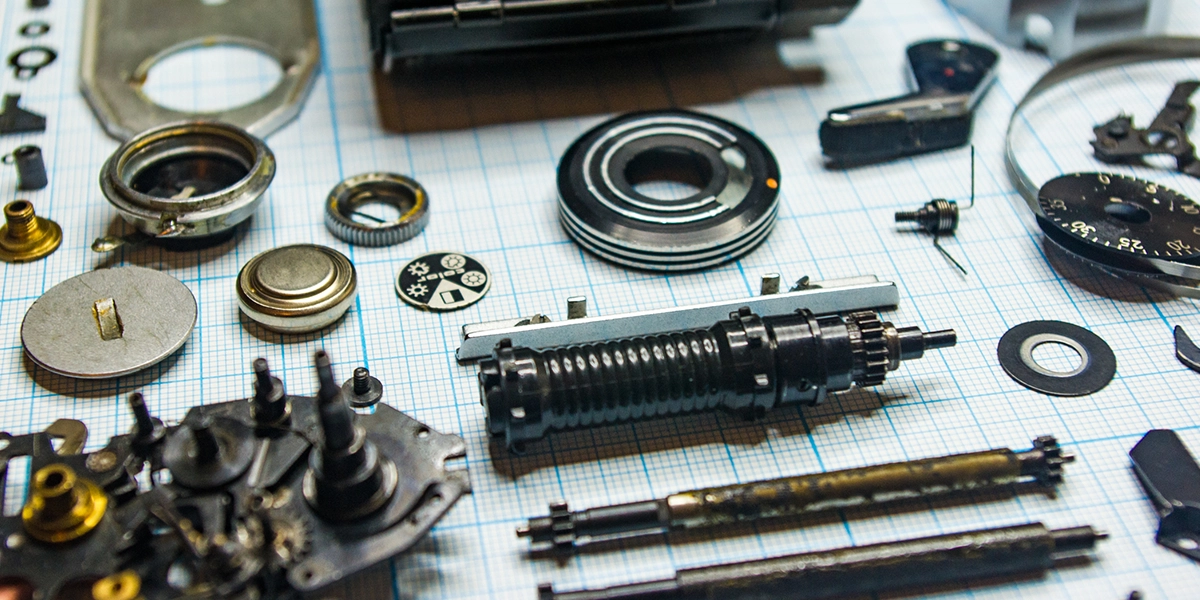The Electronic Parts Catalog is an essential part of your machine-related business. You rely on machines for essential daily operations, and you keep your plant maintained to the highest standards. But no matter how well prepared you are, parts fail. And when they fail, someone needs to order replacement parts. And when it happens, you need to get that machine back online as quickly as possible.
In the days of paper parts catalogs, finding the replacement part could take precious hours of researching and calling suppliers. Even more frustrating (and costly), sometimes the wrong part was ordered, forcing the process to begin again. This can delay a repair by days or even weeks.
Now there’s a better way. Electronic Parts Catalogs, or EPCs, provide quick and accurate tools for identifying and procuring the part you need. Check out our expert guide to learn more about EPCs and which one is right for your business.

What is an Electronic Parts Catalog?
Traditionally, manufacturers relied on paper systems, manually tracking any updates to component parts. As machines become more complex, it’s become very difficult to keep track of parts and suppliers. Manual tracking is now insanely time-consuming and more error-prone than ever before.
EPCs aim to solve this problem with web-based or software solutions that track parts and incorporate changes in components. These digital platforms replace the traditional system with scalable, responsive packages that manage spare parts catalogs for you.
Benefits of Using an Electronic Parts Catalog
EPCs provide many benefits to a busy machine shop. These automated systems assume a wide range of tedious manual labor. They free engineers and managers to focus on more important tasks. And an electronic parts catalog can simple or complex, tailored to an organization’s required level of service.
The right Electronic Parts Catalog can help you:
Save time
Stop wasting time manually tracking all the component parts you might need. Parts evolve. Suppliers and manufacturers change all the time, making this is a time-consuming task better suited for automation.
Get the right parts
An EPC provides extra information, giving you peace of mind that you’re ordering the right part. Because a good EPC connects to the original bill of materials–more on that in a minute–teams can always order the correct part, no matter what changes have occurred in the components.
Streamline inventory
Manual inventory tracking is not only tedious, it’s also open to human error and forgetfulness. A good electronic catalog will also keep track of your spare parts inventory so you don’t have to.
Keep track of updates
You need to know when suppliers change and component parts evolve. An EPC can automatically update your parts catalog with current information on manufacturers and parts. Tweddle Group’s powerful EPC connects an entire catalog to the original bill of materials. The system tracks changes throughout a product lifecycle. If suppliers or part designs change over the course of production, the electronic parts catalog automatically updates any relevant information.

Features to Look for in an EPC
Depending on your shop or industry, some EPC functions will be more crucial. Take a moment to consider the available features and your organization’s needs.
- Materials tracking – Find the materials you need and keep your inventory up to date with the click of a button.
- Barcode scanner – Quickly add or remove inventory with a tap of your phone! A barcode scanner is a great time-saving feature offered by many electronic parts catalogs.
- Videos – Support and product information is a click away with helpful videos in your EPC.
- Easy searching – Search by VIN, serial number or part name. These features help you find the needed component quickly, and ensure speedy delivery.
- 3-D modeling – lets users zoom in on the exact location of a component and view it from any angle. This saves considerable time, especially when the part number is not known. The best EPCs maintain models of your machines and track each part. This helps with part identification and makes part orders more accurate.
- Multiple device access – View your EPC from a computer, mobile phone or tablet. EPCs are accessible and supported across nearly any platform you use, fitting into the way your shop works.
Choose the Right Electronic PartS Catalog for Your Business
All electronic parts catalogs are different. One system might suit and original equipment manufacturers, while a merchandise producer will likely have completely different needs. When shopping for an EPC, consider the following questions and features:
What is your price point?
An electronic parts catalog’s cost depends on multiple factors. Do you need a software app or a web-based solution? Which features are essential, unnecessary or nice-to-have? The more tools and features you need, the more you’ll pay. One way to minimize the expense is to determine exactly which features you do and don’t need. Be sure you don’t pay for any features you don’t want.
Do you need software or a web-based application?
Software-based EPCs offer a more powerful array of tools and features. You’ll have to install and update them across any device you use. If your shop runs lean without a dedicated IT person, a web-based EPC may be easier to use.

Do you need automated returns?
OEMs in particular benefit from an electronic parts catalog that tracks and updates inventory for automated returns.
What file formats do you need?
EPC solutions can provide data sheets and design drawings in a number of different formats. Do you need PDFs or writable forms? Make sure your EPC solution offers the appropriate outputs.
Does your Electronic Parts Catalog need to integrate with other systems?
Compatibility is a major concern. Make sure your EPC integrates with other essential systems, like CAD.
Future-proof your operation with an Electronic Parts Catalog
Manufacturing experiences rapid changes. Old-fashioned cataloging just doesn’t work in a fast-paced industry. When a machine fails, you need to get it back up and running fast. Getting the wrong replacement part can cause costly delays in production or, worse yet, serious damage to your machinery.
An electronic parts catalog helps keep your plant up and running. It helps you get machines back online with maximum efficiency. Best of all, the right EPC solution keeps your operation ready for whatever unforeseen change is coming around the corner.



